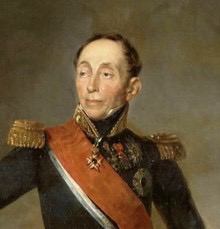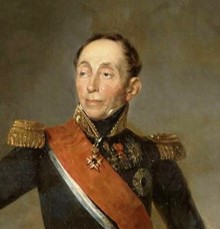
I agree. I think that’s what it’s best used for; a planning tool, purely and simply. And that’s a good thing.
General Exposition

I agree. I think that’s what it’s best used for; a planning tool, purely and simply. And that’s a good thing.
General Exposition
Not much to see here. Except a Cavalry Corps goes on Maneuvers in Latvia…and is never seen or heard from again.
Next up is Turkey (@Panzeh), followed by L’Empereur (@Juan_Raigada).
We may have a few harsh actions and words coming up these next two Land Phases…
General Exposition
Wait, we don’t get to see the dierolls?
That’s too bad…
The Tsar’s staff can confirm it weren’t Rusalkas leading astray our manly troopers. Winter is hard, and it was harder to find good quality fodder for the horses in the area. So it has been necessary to reorganise our cavalry.
Prince Katitsya-Shest’, ADC to the Tsar Alexander

An interesting point, and one on my mind this last day.
In Russia’s turn, he used the “logfile” function in vassal, and did his forage rolls there. It’s for me to then see, validate, and then, when done, save as a normal save and move forward. He had two forage rolls, one for each visable Cav Corps on map, the other was uneventful.
But bigger picture, however each nation wishes to do Forage rolls is fine for me; vlog (the log file function in Vassal), a die roll engine (I use orkos for everything, as you can see I even have a “character” for our PBF there), whichever you choose is fine for me, just send the method back to me with your turn (the vlog, the links for rolls, etc.). One of the benefits of moderated play is not having to stop the flow for those particular rolls. I’ll always then post here whaever was “seen” by the other Major Powers in terms of result, and try to make it halfway entertaining. All other rolls, I’ll handle.
The Turkish move will be up soon. Battle will be joined in Egypt…
Gratias Tibi,
Et Historicus, Moderator est DIsceptator
Cool.
What will the FoW be in respect to:
-Enemy forces collocated, before combat but for garrisoning or fight decisions.
-Enemy forces in combat, and loses thereof.

Elaborate? I don’t understand the question, perhaps. When in/out decisions are made this occurs when the first enemy Corps enters an area, no FoW is divulged yet (other than perhaps by witnessing what amount, if any, Corps enter a city (Garrison limits may impact that decision, or not).
This is fully revealed during combat.
Gratias Tibi,
Et Historicus, Moderator est DIsceptator
That was the question indeed. France is satisfied.
We’re on the honor system here? I’m fine with this, but just wanted it to be clear.
I think we are. It’s for @Navaronegun to decide on his umpiring style and, honestly, this is a game you normally have to play with an honor system of some sort FtF, judging by the rules.
I will be using an online roller to keep a record, but it’s moot since rolls are private between the involved players and the umpire. So the record a die roller offers is mostly useful for my private timeline.
Interesting, I just assumed all die rolls would be made by the moderator.

Either method referred to above (rolls in the vlog function or a die roll engine of your choice) is fine by me for Forage rolls. If the latter, please provide links and who was being rolled for in whatever communication you send back.
Any game, basically is rooted in some form of honor. To @Juan_Raigada’s point, FtF there is far more than here, where I get to see all the private info, QC mechanics, and (hopefully…) catch mistakes. Luckily as Pius VII, I am infallible. There was a Papal Bull on that. Look it up! It’s historically accurate! Ask @Brooski, he’ll attest to that fact.
This would just create unnecessary stoppage/back and forth for Forage. There will be enough other micro-pauses for other things.
Gratias Tibi,
Et Historicus, Moderator est DIsceptator

Actually, please either use the logfile or a die roller with links to roll, not that thread (it’s easier for my process).
Gratias Tibi,
Et Historicus, Moderator est DIsceptator
Roger that.
Overall, there isn’t much to see here. The Corps in Bessarabia Forages successfully with no chance of loss ( -2 on the forage roll in a 4 forage area, 3 unused MPs, 1 home nation province +2 for winter). All others use Depot Supply.
However, we have a bit of a contretemps in the Southwestern Corner of our Map…
The Grand Vizier lands first and seizes Damietta (this is merely color, but important to our narrative later…), as the Fleet provides Sea Supply (which is available in the entire Sea Zone if necessary). Pechlivan Khan’s Army is supplied overland from Jaffa(…and things get interesting…).
More to come soon…
General Exposition
“What men call sovereignty is a worldly strife and constant war.”
“No Arab loves the desert. We love water and green trees, there is nothing in the desert. No man needs nothing.”
— Faisal I bin Hussein bin Ali al-Hashemi
“Pehlivan İbrahim Ağa (Pechlivan Khan) had been sent to the Damascus Eyalet by the Grand Vizier from the Silestra Eyalet, leaving Kushanz Ali in command there. Not a Khan or a Pasha, Pehlivan was a Turk, who had climbed his way to the rank of Mîr-i alay through hard work and merit in the Janissaries, not being a member of any of the Albanian or Rumelian cliques. While of low rank, the Vizier had spotted his talent thirteen years earlier in the War against the Austrians, before he was called to serve the Sultan, and had his life saved by him outside of Belgrade. He never forgot and arranged for several promotions and appointments to important garrisons and assignments, though limited due to his lack of influence within the Janissaries.
But the Sultan’s determination to undo the damage caused by the disintegration of Ottoman authority in Egypt following the French Invasion, gave both the Vizier an opportunity to solidify his position and to develop and enhance the prestige of a qualified, professional young protege. Egypt was spinning out of control, the seizure of power by Tahir Pasha and his flirtations with foreign powers as he and his rebellious troops seek to emulate the Mamalukes thirty years before could make a separation from the Sublime Porte permanent.
Arriving in Jaffa, he met the waiting I Janissary Corps and a Mounted orta in the Imperial Cavalry. After a week of study, the march was planned and undertaken, pre-coordinated with the Vizier. He would march along the coast to the Nile, then march south and secure Cairo. The Vizier would land at Damietta as a precautionary measure should Tahir Pasha move first.
Tahir Pasha did. The Vizier landed unopposed, but too soon. This led to suspicions in Cairo of a more determined move against the new regime by the Blind Pasha. The Spanish Advisors, upon hearing reports of a force gathering in Jaffa, recommended that Tahir Pasha move forward to the Sinai and defeat the force in the desert there where Tahir’s Bashi-Bazouks could harass and surprise the more regular Janissary formations in unfamiliar terrain. He left Cairo and ultimately established a forward position near the ruins of the fortifications at El Arish. His intention was to send a force South through a part of the Negev and ambush the Ottoman forces as they reached Rafah, attacking headlong on the coast from the West and the flanking cohort from the Southeast against the enemy approaching via inland trails through Ain Habosour.
But this was not to be. On January 18, 1805, in the evening, scouts reported to Tahir Pasha at his tent in the ruined fortifications near El Arish, that the Ottomans were a league away. Pechlivan had stolen a march on him. There was nothing to do but prepare a line for the next day.
Pechlivan, in the meantime was in council with his officers. In his mind, the best course was to attack at dawn, solidly but carefully, approaching while bringing fire with an eye to enveloping the flanks of the enemy. This would allow the superior training and discipline of his troops to break the Albanian rabble, while minimalizing his own casualties. Hopefully."
To Reclaim a Birthright: Ottoman Expansionism in North Africa, 1805-1815, Chapter 2: Pehlivan İbrahim Ağa’s Advance, p.1-4
Dr. Bernard Leatherduster, University of Angora Press, 1983.
The sun rises, early and hot on the morning of January 19, 1805. The sun is the hammer and you are the anvil.

Key Leader and Commander Pechlivan Khan 3.4.3 B
I Janissary Corps with 14 Infantry and 2 Cavalry, all have 3.0 Morale
Imperial Cavalry Corps with 1 Cavalry, has a 3 morale
Syrian Corps with 5 Infantry and 6 Cavalry, Infantry has 1 Morale and the Cavalry has 2 Morale.
28 Factors, 9 are Cavalry, at 2.4 Morale
Corps Leader, Tahir Pasha, 1.1.1
I Egypt Corps with 15 Infantry and 5 Cavalry, Infantry has 1 Morale and Cavalry has 3 Morale
20 Factors, 5 are Cavalry, at 1.5 Morale
Desert: +1 to Morale Level on Combat Table for both sides, -1 to Final Pursuit Level
Leadership: Attacker has +1 to Combat Rolls, Defender has -1 to Combat Rolls
Chits: Attacker Chooses Echelon, Defender Chooses Defend
More to come…
General Exposition
Poor Egyptians… most likely routed on the very first roll and then butchered by the cavalry.
The desert modifier to morale is pretty intense.
I believe the rout is pretty certain because of Turkey’s superior morale and tactics, but I think Egypt will probably survive with the bulk of her forces intact because it isn’t an entirely lopsided battle and she has cavalry to throw at her pursuers.